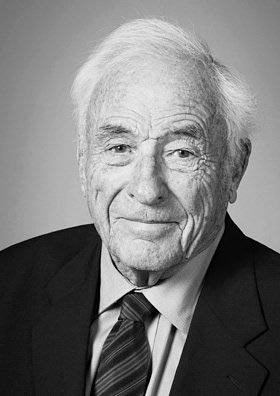
Willard Boyle, who shared the 2009 Nobel Prize for Physics, has died at the age of 86. Boyle was awarded one half of the prize with George Smith for inventing the charge-coupled device (CCD) camera. Boyle and Smith were both working at Bell Laboratories in New Jersey when they made their discovery in 1969 – Boyle was director of device development at the lab and was Smith’s boss; Smith was a department head. The other half of the 2009 prize went to Charles Kao for his work on optical fibres.
Boyle was born in Amherst, Nova Scotia, on 19 August 1924. His family moved to a remote logging community in Quebec, where Boyle was home-schooled by his mother until the age of 14. After serving in the Royal Canadian Navy in the Second World War, he then attended McGill University, receiving a PhD in physics in 1950. Boyle joined Bell Labs in 1953, where he spent the rest of his career before retiring in 1979 and returning to his native Nova Scotia.
Like many Nobel laureates, the prize came late in Boyle’s life, when he was 85. As his long-time friend and Nova Scotia local councillor Ron MacNutt told the Canadian Broadcasting Corporation yesterday, Boyle “had some regret that that recognition came a little bit late for him to get out and do more of that, to talk to younger children in school”. An earlier award, MacNutt added, might have let Boyle influence even more people in his life.
Revolutionary pioneer
The invention of the CCD revolutionized photography because the devices allow images to be converted directly into digital data rather than using film. CCDs once formed the basis of all digital cameras, but have since been replaced by CMOS sensors in most low-cost applications such as mobile phones and some digital cameras. CCDs are also widely used in astronomy, with the Hubble Space Telescope, for example, having several CCD cameras on board, including in the Wide Field Camera, which was recently upgraded.
A CCD camera contains millions of light-sensitive cells that are arranged in rows and columns to form a matrix. Incoming light is converted via the photoelectric effect into an electron, which is stored in a capacitor, with the amount of stored charge in each cell being proportional to the intensity of light. The charges are then transported to the edge of the CCD matrix to be read out, allowing the image to be reconstructed from the contents of each pixel.
Boyle was made a Companion of the Order of Canada in 2010 and received several other awards for his CCD work – including the IEEE’s Morris N Liebmann Memorial Award, which he shared with Smith. He is survived by his wife Betty and three children.



